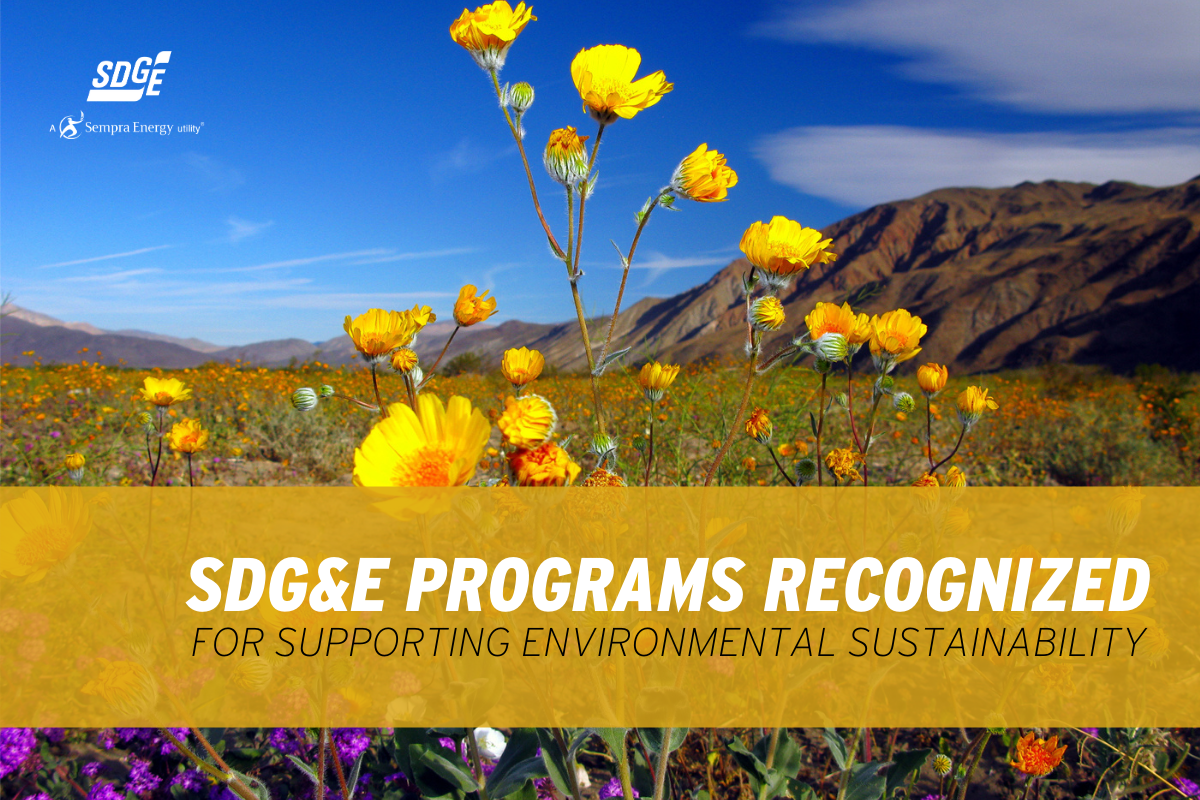As part of our commitment to environmental stewardship, we have many ongoing programs that directly or indirectly reduce our carbon footprint and help address climate change. Recently two of our programs won awards from local organizations.
Diamond Award - SANDAG iCommute Program
In September, the San Diego Association of Governments (SANDAG) recognized SDG&E as a Gold Tier Diamond Awards winner for promoting low or carbon-free ways of getting to work, such as walking, biking, carpooling or taking public transit. Each year, the SANDAG iCommute Program presents Diamond Awards to employers who help their employees get to work without adding traffic to the region’s roads and freeways, reduce greenhouse gas emissions, and improve mobility.
SDG&E has a vanpool program; provides our employees with information on alternative commute choices; and organizes events to get employees excited about trying alternatives to driving alone. Our company has hosted Bike to Work Tune-Up Day, sponsored a pit stop on Bike to Work Day offering refreshments and giveaways, and participated in Rideshare Week. Also, we recognize employees during our annual Commuter Appreciation Luncheon.
Environmental Excellence Award – Industrial Environmental Association
Earlier this month, the Industrial Environmental Association (IEA) selected SDG&E’s Fuels Management Program for an Environmental Excellence Award, noting in part our collaboration with environmental agencies and holistic approach to reducing wildfire risk.
The Environmental Excellence Award recognizes organizations that are leaders and advocates for science-driven environmental practices and policies.
In response to State Senate Bill 901 approved in September 2018, SDG&E launched our Fuels Management Program to remove non-native and flammable vegetation – such as dead and down trees – around electrical facilities in high fire-threat corridors. Green waste resulting from the work was transformed into nutrient-rich mulch and donated to local organizations.
By repurposing organic material that would have otherwise gone to a landfill, we are able to reduce carbon emissions and use of landfill space. More importantly, by reducing wildfire risk, the program can help prevent the release of millions of metric tons of carbon emissions into the air. Year to date, fires in California have already produced some 90 million metric tons of carbon dioxide, about three times the amount generated from providing power to the entire state, according to the Washington Post.
The Fuels Management Program also stood out for its design based on best practices. Prior to any thinning or removal of the vegetation, we conducted an analysis of known biological and cultural resources so we can avoid environmentally and culturally sensitive areas. Locations that were high fire risk but occur outside of known biological and cultural resource areas were prioritized for fuel management.


